Intelligent Engineering
Our Intelligent Engineering solutions across products, plant and networks, combine our engineering expertise with advanced technologies to enable digital engineering & operations, develop autonomous products & platforms, and build sustainable energy and infrastructure
.png?width=774&height=812&name=Master%20final%201%20(1).png)
Hyperautomation: Transforming Industries in the Digital Age The next frontier of automation will automate everything from simple tasks to complex processes.
CyientHyperautomation: Transforming Industries in the Digital Age The next frontier of automation will automate everything from simple tasks to complex processes.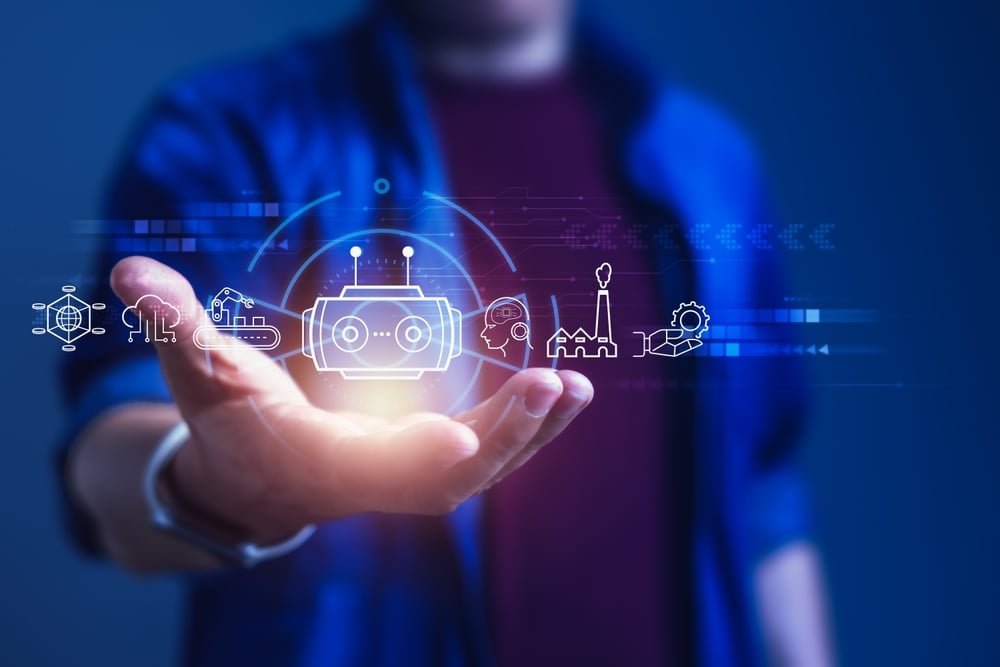
Abstract
Agriculture provides basic sustenance to mankind. With population explosion, the demand for food is also growing exponentially. At the same time, agriculture is a resource-intensive activity with increasing implications for the environment. Modern agriculture offers sustainable solutions with efficient farming using limited resources of water, energy, and land, yet catering to the ever increasing demand for food. Radio frequency (RF) technologies which are widely used in the defense, aerospace, and communications sectors, can play a pivotal role in providing a complete solution for modern agriculture. This white paper discusses how RF technologies can address the challenges facing modern agriculture and provides a basis for further exploration of the potential of RF technologies by R&D and data scientists.
Introduction
In an era defined by relentless technological advancement, the concept of hyperautomation has emerged as a catalyst for unprecedented disruption across various sectors and industries. This powerful fusion of state-of- the-art technologies such as robotic process automation (RPA), artificial intelligence (AI), machine learning (ML), business process management (BPM), low-code/no-code (LC/ NC), intelligent document processing (IDP), process orchestration, and process mining is reshaping the way organizations operate scale in a digital age.
By automating repetitive tasks, streamlining processes, and leveraging intelligent algorithms, hyperautomation empowers businesses to achieve more, helps focus on strategic initiatives, and helps deliver exceptional value to customers. It facilitates everything from enhancing customer service and optimizing business processes to revolutionizing supply chain management and more. Hyperautomation is reshaping the business landscape, empowering organizations to stay competitive in an increasingly connected world.
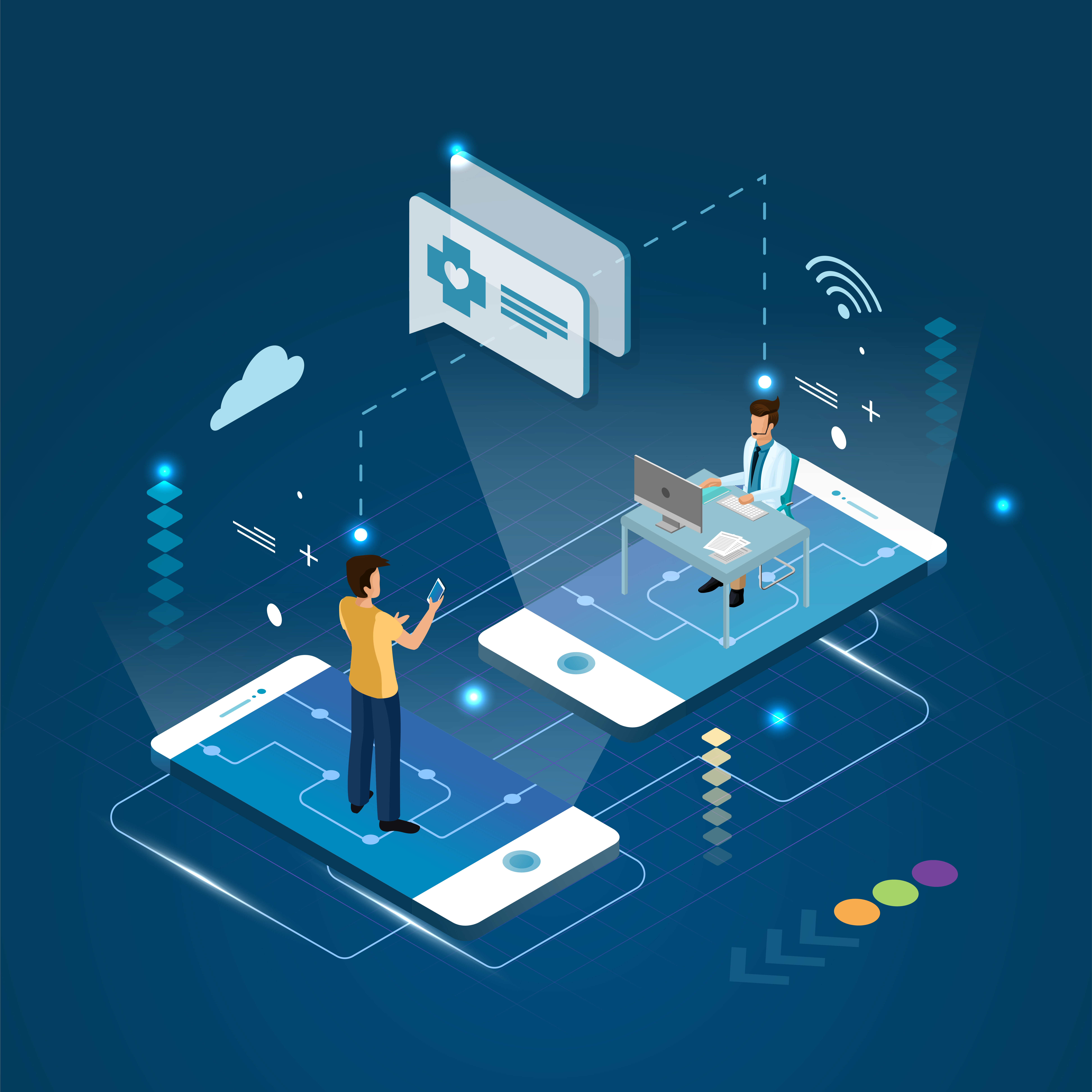
Access Whitepaper
The Hyperautomation Paradigm
Hyperautomation’s growing role in business is reflected in the observations of leading analysts:
Hyperautomation can help businesses to improve operational efficiency by up to
50%
and reduce costs by up to 30%
- Forrester
Hyperautomation can help businesses to improve customer satisfaction by up to
20%
- IDC
Hyperautomation can help businesses to accelerate time-to-market by up to
30%
- PwC
Hyperautomation can help businesses to improve innovation by up to
40%
- Gartner

These bytes demonstrate the clear business benefits of hyperautomation and why it is becoming a top priority for organizations of all sizes across all industries. For CXOs and business leaders who have a mandate to improve efficiency, reduce costs, and stay competitive in today’s digital world hyperautomation is full of promise.
Hyperautomation represents a fundamental shift in how businesses leverage automation technologies to optimize processes, enhance productivity, and create more value for customers. It is about going beyond traditional automation to achieve end-to-end process transformation, optimization, and automation. Let us take a closer look at the key components of hyperautomation.
Components of Hyperautomation
Robotic process automation (RPA)
RPA forms the backbone of hyperautomation, automating repetitive, rules-based tasks across business processes in various sectors including telecom, aerospace, power and energy, mining, utilities, pharma and healthcare, banking, and insurance. Whether it's automating data entry in telecom, large asset data migration in utilities, geospatial, ESG-related data collection, and tracking for power and energy, claims processing in healthcare, or order processing and fulfilment in e-commerce, RPA streamlines operations, reduces errors, and frees up human resources for more strategic tasks.
Intelligent document processing (IDP)
IDP solutions transform semi-structured and unstructured data into usable structured data. Business data is at the heart of digital transformation; unfortunately, 80% of all business data is embedded in semi- structured and unstructured formats such as business documents, emails, images, and scanned PDF documents. IDP is the next generation of automation, able to capture, extract, and process data from a variety of document formats. It uses AI technologies such as natural language processing (NLP), computer vision, deep learning, and machine learning (ML) to classify, categorize, and extract relevant information, and validate the extracted data.
Artificial intelligence (AI) and machine learning (ML)
AI and ML algorithms add cognitive capabilities to automation, allowing systems to learn from data, adapt to changing conditions, and make intelligent decisions. From personalized recommendations in e-commerce, predictive maintenance in manufacturing to fraud detection in finance, AI and ML are transforming the way businesses interact with data and customers.
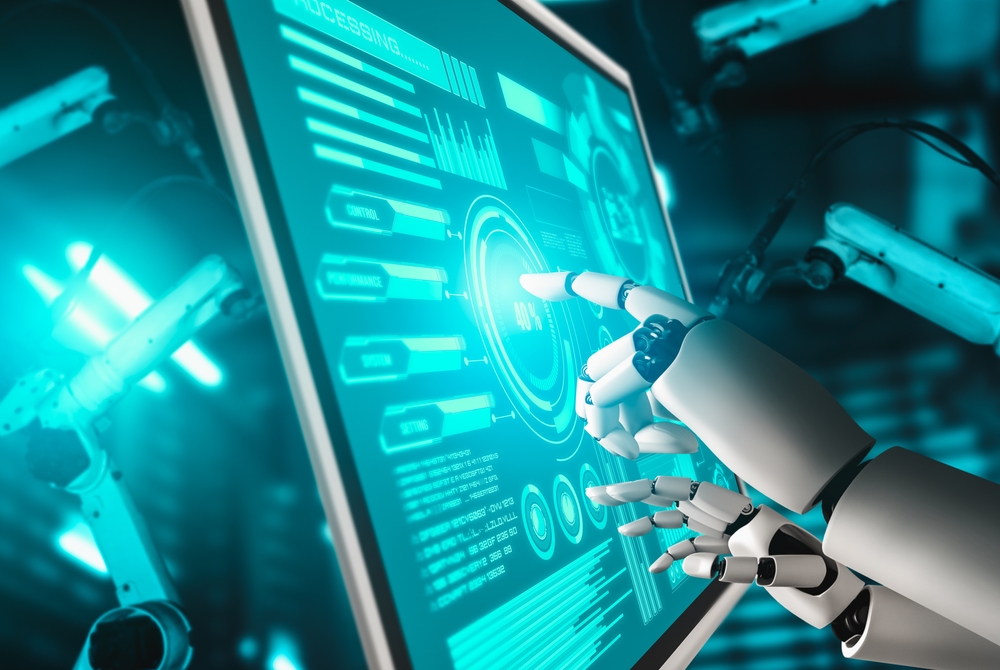
Process Orchestration
Process orchestration tools integrate and manage the complex interplay between various automation components ensuring seamless workflow automation. This is crucial for achieving end-to-end process optimization and automation. Process orchestration coordinates the various moving parts or endpoints of a business process, and sometimes even ties multiple processes together. It helps orchestrate work between people, systems, and devices while providing a seamless and holistic end-to-end process automation that drives better business outcomes, improved customer experiences, and higher operational efficiency.
Process Mining
Process mining tools are designed to discover, monitor, and improve the actual business processes by extracting data from event logs readily available in enterprise information systems such as SAP, Salesforce, PLM, etc. Process mining includes automated process discovery (i.e., extracting process models from an event log), conformance checking (i.e., monitoring deviations by comparing model and log), automated construction of simulation models, model extension, model repair, case prediction, and history-based recommendations. It provides visibility into end-to-end business processes, enables continuous improvement by identifying bottlenecks and modifying processes to operate in their optimal state.
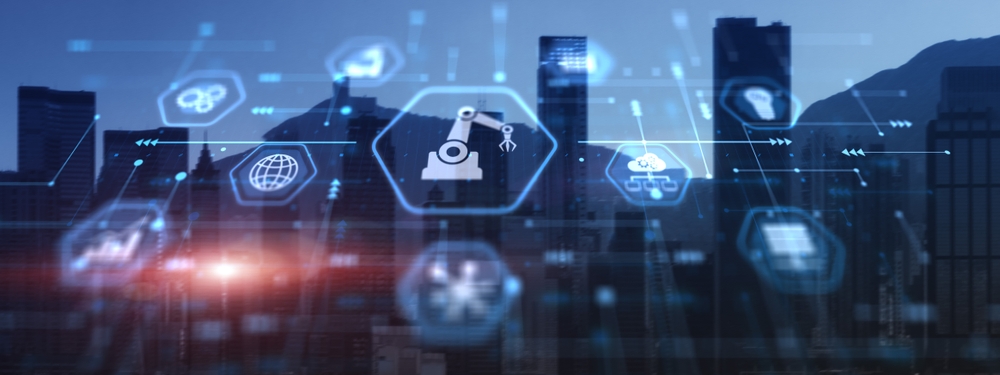
Hyperautomation Across Industries and Functions
The impact of hyperautomation is pervasive, transcending industry boundaries. Let's explore how this transformative approach is reshaping sectors across the board.
i. Telecommunications
Hyperautomation has the potential to revolutionize the telecom industry by automating many of the manual and repetitive tasks currently performed by humans. This can free up telecom operators to focus on more strategic initiatives, improve efficiency, reduce costs, and provide a better customer experience.
Automated network provisioning: Hyperautomation can be used to automate the provisioning of new network equipment, services, and customer accounts. This can reduce the time it takes to provision new services and improve the accuracy of provisioning.
Automated network monitoring and fault detection: Hyperautomation can be used to automate the monitoring of network performance and the detection of faults. This can help telecom operators to identify and resolve network problems faster.
Automated performance optimization: Hyperautomation can be used to automate the optimization of network performance. This can help telecom operators to improve the quality of service and reduce costs.
Automated customer service: Hyperautomation can be used to automate many customer service tasks, such as order fulfilment, provisioning, and troubleshooting. This can improve the customer experience and reduce costs.
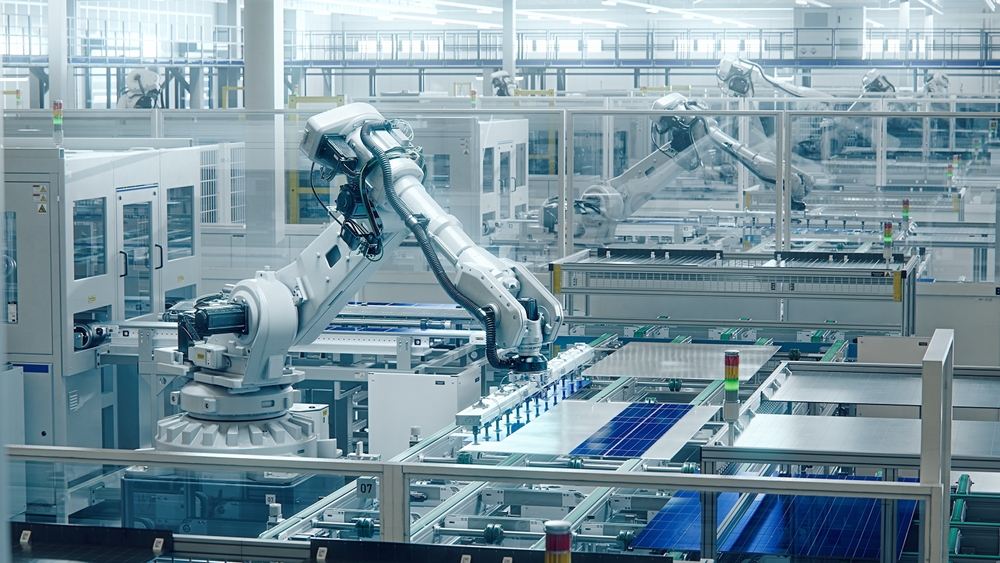
ii. Pharma and Healthcare
Hyperautomation can offer significant benefits to the pharmaceutical industry by streamlining various business processes, increasing operational efficiency, and improving patient outcomes. It can help accelerate the drug discovery and development process by automating data analysis, molecule screening, and clinical trial management.
In healthcare, hyperautomation can revolutionize patient care. It automates administrative tasks such as appointment scheduling, billing, creating patient summaries, and multiple processes across the revenue cycle management (RCM) allowing medical professionals to focus more on patient well-being. Furthermore, AI-driven diagnostics can improve accuracy and speed in disease detection, while smart devices and wearables facilitate remote patient monitoring.
iii. Manufacturing and Supply Chain
Hyperautomation has turned the manufacturing landscape into a highly efficient, data-driven ecosystem. With real-time monitoring and predictive maintenance, factories can reduce downtime, minimize waste, and optimize production schedules. In supply chain management, it ensures end-to-end visibility, optimizing inventory levels, eliminating bottlenecks and inefficiencies, and enhancing responsiveness.
Inventory management: Traditional inventory management systems are fraught with inefficiencies and prone to human error. RPA and AI-driven hyperautomation solutions provide real-time analytics and predictive modeling that consider variables such as seasonality, market trends, and supply chain disruptions. Simultaneously, RPA bots can handle mundane tasks like order processing, thereby reducing errors and freeing up human resources for more strategic tasks.
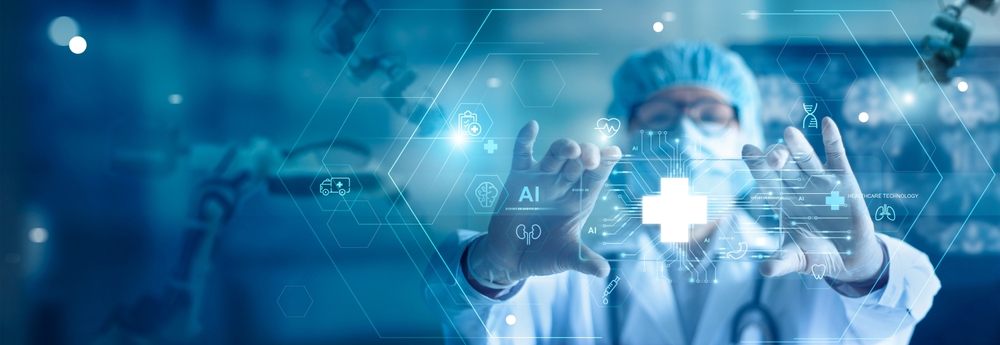
iv. Energy and utilities
With increasing competition and rising customer expectations, energy companies are under immense pressure to optimize their operations and reduce costs. By implementing hyperautomation solutions, energy and utility companies can automate repetitive tasks, improve accuracy, and enhance overall productivity.
In the energy sector, hyperautomation plays a pivotal role in optimizing energy consumption, grid management, predictive maintenance, asset management, and energy demand forecasting. Smart grids use automation and data analytics to balance supply and demand, reduce wastage, and enhance the integration of renewable energy sources.
Energy companies operate within a highly regulated environment that requires strict adherence to safety standards, environmental regulations, and reporting requirements. Hyperautomation solutions using RPA and BPM allow energy companies to ensure consistency in their operations and greater compliance by minimizing human errors. This technology empowers organizations to enhance productivity, reduce costs, and deliver sustainable solutions for a brighter future in the energy sector.
v. Aerospace
Hyperautomation is revolutionizing the aerospace industry by optimizing processes, enhancing operational efficiencies, and improving safety and quality across various facets of aerospace operations.
Customer complaints processing: Hyperautomation using RPA and Gen AI can be used to automate commercial airline customer complaints and queries. There are millions of queries and complaints processed by hundreds of human agents. The manual process is slow, expensive, and leads to customer dissatisfaction. By automating the manual process, airlines can save more than 10 million USD annually in hard personnel costs.
Data extraction and updation into ERP systems: A vast amount of critical data is locked in semi-structured and unstructured formats like scanned PDFs and image files, which needs to be retrieved and validated using standard business rules before posting it into enterprise systems like SAP. Hyperautomation using RPA and IDP is handy in such situations and saves thousands of hours of human effort which could be better utilized elsewhere.
Hyperautomation can also be applied in other aerospace use cases such as engineering documentation for regulatory and traceability expectation, reuse of engineering information based on past type certification, and sizing and scaling of the engineering BOM.
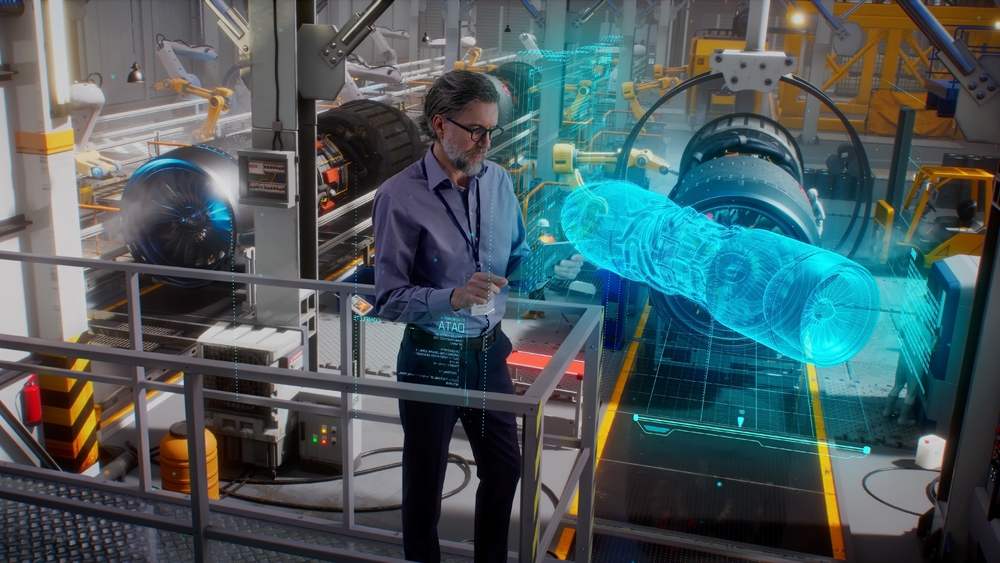
vi. Mining
Hyperautomation has the potential to revolutionize the mining industry by automating many of the manual and repetitive tasks that are currently performed by humans. This can help mining companies to improve safety and efficiency, reduce costs, and improve sustainability.
Automated mine planning and scheduling: Hyperautomation can automate the process of mine planning and scheduling. This can help to improve the efficiency of mining operations and reduce costs.
Automated equipment maintenance and monitoring: Hyperautomation can automate the maintenance and monitoring of mining equipment. RPA, AI, and IoT sensors can be used to predict when mining equipment needs maintenance. This can help to prevent equipment failures and extend the lifespan of equipment.
Improve compliance: Hyperautomation can automate compliance processes such as environmental and safety audits. This can help mining companies to reduce the risk of fines and penalties and ensure consistent and accurate reporting.
Automated data collection and analysis: Hyperautomation can automate the collection and analysis of data from mining operations. This data can be used to improve safety, efficiency, and sustainability.
vii. Banking and financial services
The financial sector has been quick to embrace hyperautomation, using it to streamline compliance, risk management, and customer service. Hyperautomation ensures faster loan approvals, real-time fraud detection, and personalized financial advice. It also enables banks to adapt to changing regulatory requirements swiftly.
viii. Retail and e-commerce
E-commerce giants are leveraging hyperautomation to deliver personalized shopping experiences. AI-driven recommendation engines analyze customer behavior and preferences, while chatbots and virtual assistants provide instant support. RPA also streamlines inventory management, ensuring products are in stock when customers need them.
ix. Human resources
HR departments are using hyperautomation to streamline recruitment, onboarding, and talent management. Chatbots assist with employee inquiries, while AI-ML and Gen AI help identify top candidates from a pool of applicants. Predictive analytics aids in workforce planning and employee retention strategies.

Challenges and Considerations
While hyperautomation offers remarkable benefits, there are critical challenges in its implementation:
Since there is no single hyperautomation platform available today, there are a combination of technologies and tools at play. These need to be inter- operable and orchestrated in a cohesive and holistic manner to reap the full benefits of hyperautomation.
Organizations must address issues related to data security, privacy, and ethical concerns when implementing AI and automation at scale. Furthermore, the need for upskilling and reskilling the workforce to collaborate effectively with automation technologies is paramount.
Automated processes involve a diverse number of endpoints (people, systems, and devices). If these endpoints are not properly orchestrated, processes can be disjointed or siloed. This is where a robust process orchestration tool would be required to enable hyperautomation.
Business processes are not always simple, they can be fairly complex. These processes are coordinated based on a certain logic, which is rarely a linear set of steps. As a result, complex processes must be described by advanced workflow patterns, which ensure alignment, scalability, and process resilience.
Use Cases
4. RF Technology Use Cases in Modern Agriculture
Let us take a detailed look into the use of different RF technologies in modern agriculture.
SAR-based remote sensing for crop monitoring
SAR uses electromagnetic properties such as amplitude, phase, relative amplitude, and relative phase of radio waves reflected from the crops on which it is transmitting the signal. These EM properties can be mapped to a color map to identify the type, age, and health of the crops. The airplane carrying the SAR moves in a straight line at any point of time. Hence, consecutive time of transmission/reception of Figure 3. The SAR[1] principle of operation RF pulses translates into different footprints of the antenna beam on the ground. A coherent (synchronous) combination of the received signals allows the construction of a virtual antenna aperture that is much longer than the physical antenna length, giving rise to the term “synthetic aperture” and gives the radar the property of being an imaging radar. Figure 3 represents the SAR principle of operation.
![Figure 3. The SAR[1] principle of operation-1](https://www.cyient.com/hubfs/Figure%203.%20The%20SAR%5B1%5D%20principle%20of%20operation-1.png)
Figure 3. The SAR[1] principle of operation
Different types of crops respond to different RF spectrums. For example, tall and high biomass crops like sugarcane, maize, jute, and millets respond better to a lower microwave spectrum (1-2 GHz) whereas rice and pulses (low to medium biomass crops) are responsive to a slightly higher spectrum (4-8 GHz).
![Figure 4. SAR imagery for different crop types [2]](https://www.cyient.com/hubfs/Figure%204.%20SAR%20imagery%20for%20different%20crop%20types%20%5B2%5D.png)
Figure 4. SAR imagery for different crop types [2]
Further, crops at different ages reflect RF signals differently which gives an indication of crop ages (Figure 5).
![Figure 5. SAR imagery in different life stages of a crop [3]](https://www.cyient.com/hubfs/Figure%205.%20SAR%20imagery%20in%20different%20life%20stages%20of%20a%20crop%20%5B3%5D.png)
Figure 5. SAR imagery in different life stages of a crop[3]
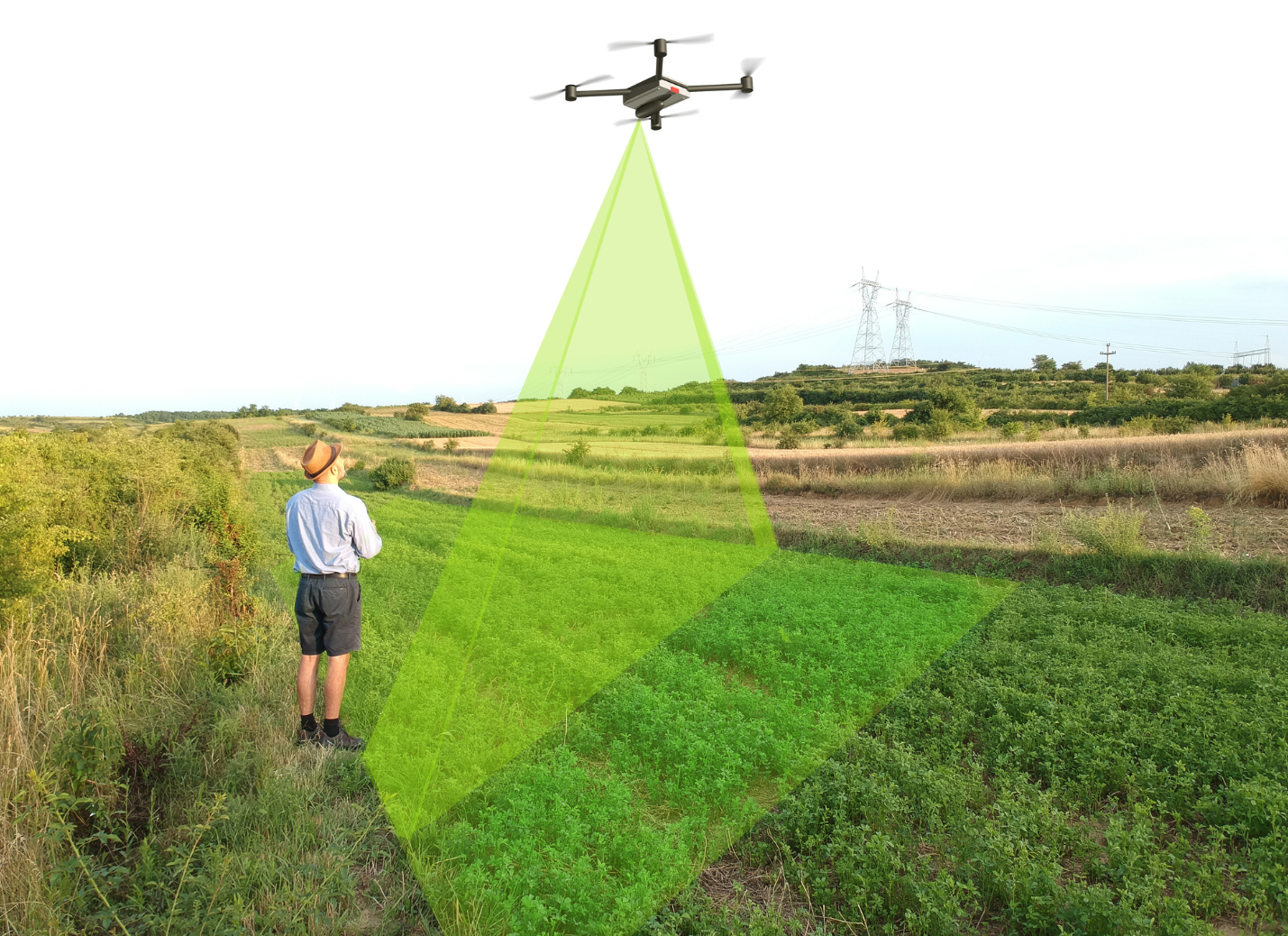
GPR-based soil study
To complement SAR usage in modern agriculture, GPR, being in closer proximity to ground, is used to study soil contents in detail. GPR sends a radio frequency signal toward the ground and part of it penetrates the ground. When the signal experiences the differences in the media, part of the penetrated signal is reflected back toward the radar and carries the relative characteristics of the media (see Figure 4(a)) . Electromagnetic properties of the signal are then mapped to an image representation with respect to survey coordinates (see Figure 4(b)). Usually, GPRs are pulled over the ground to collect data. With advancement of drones, GPRs are now being mounted on drones to provide faster mapping of large farming lands.
%20Concept%20of%20GPR%201.png)
(a)
![(b) GPR being used for soil survey [4], 2](https://www.cyient.com/hubfs/(b)%20GPR%20being%20used%20for%20soil%20survey%20%5B4%5D%2c%202.jpg)
(b)
![Figure 6. (a) Concept of GPR (b) GPR being used for soil survey [4], (c) Drone-borne GPR [5](https://www.cyient.com/hubfs/Figure%206.%20(a)%20Concept%20of%20GPR%20(b)%20GPR%20being%20used%20for%20soil%20survey%20%5B4%5D%2c%20(c)%20Drone-borne%20GPR%20%5B5.png)
(c)
Figure 6. (a) Concept of GPR[4] (b) GPR being used for soil survey [4], (c) Drone-borne GPR [5]
Using the EM properties of reflected signals and corresponding mapping to images, different layers of soil and their spatial distribution can be estimated with centimeter accuracy. These characteristics may be due to the lithology of the soil or due to presence of moisture, pollutants, agrochemicals. An example is shown in the figure below.

Figure 7. GPR imagery of soil: (a) Initial condition, (b) With movement of agrochemical agents [6]
Microwave heating
Studies have indicated the effectiveness of microwaves in drying material with water content and this property is useful in drying crops faster as compared to the conventional convection method. The role of microwave heating in pest control dates back nearly 70 years where lethal exposure of insects to a 12 MHz electric field was demonstrated. Recent experiments show that insects infesting dry products are quickly affected by microwave energy as the water content in their body gets heated. An application of microwave with controlled transmitting power helps in germination of seeds. Studies have shown that the use of microwaves during drying can be safe in seeds of soybeans, corn, and beans, among others. Many studies recognize that drying using microwaves has great potential as it reduces the drying time considerably. Other applications of microwave heating include microwave-assisted bio-fuel extraction and microwave-assisted pyrolysis (to convert biomass to an intermediate liquid product that can be refined to drop in hydrocarbon biofuels, oxygenated fuel additives, and petrochemical replacements).
RF communications in agriculture
Majority of the RF sensors described above are mounted either on airborne platforms or on a ground vehicle. Drones are the latest, most popular, and inexpensive airborne platform as compared to others. Drones are required to be controlled remotely using wireless technologies. A robust and long- distance RF communications system needs to be established for controlling and operating the drones as desired.
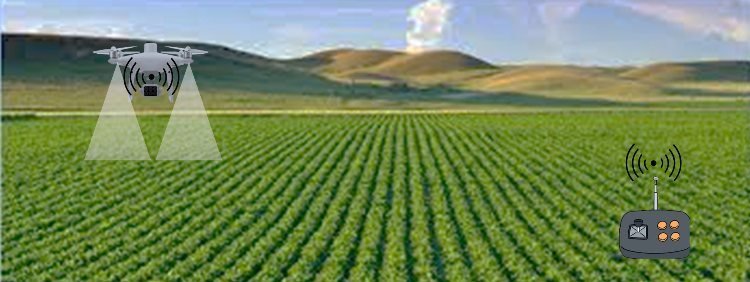
Figure 8. Remote-controlled drone for agriculture
With the advancement of technology, agricultural vehicles are adopting autonomy in their operations. The key elements of success for this are RF communications equipment and network infrastructure for a connected vehicle.
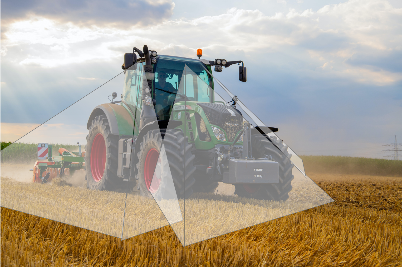
Figure 9. Agriculture vehicle with autonomy
5G technology in agriculture
The advent of 5G technology will revolutionize global farming landscapes and will open up multiple ways to establish and grow precision farming. The figure below shows that every element in modern agriculture once connected to a high speed and high throughput 5G cellular network, works in tandem with the other to optimize resources and maximize yield. The imagery generated from SAR and GPR demand throughput for transferring them to a distant and central location/data cloud. Similarly, to control farming equipment remotely, a low latency communications network in inevitable.
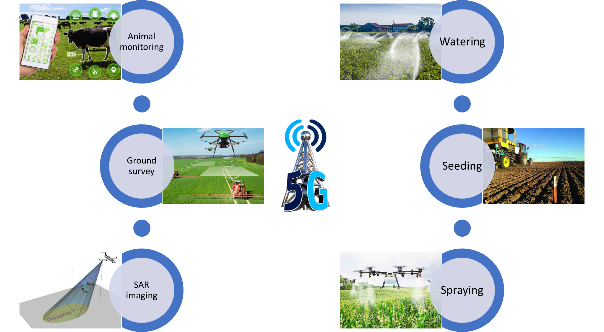
Figure 10. Uses of 5G technology in agriculture
Future of Hyperautomation
Hyperautomation will continue to evolve and redefine industries. Here are a few trends that could shape its future:
Hyperautomation as-a-service
Cloud-based hyperautomation platforms will become more accessible, allowing organizations of all sizes to leverage automation as a service. This democratization of technology will drive innovation across sectors.
Human-automation collaboration
Rather than replacing humans entirely, hyperautomation will focus on enhancing human capabilities.
Industry-specific solutions
Hyperautomation will be tailored to meet the specific needs of different industries. We can expect specialized solutions in sectors like healthcare, manufacturing, telecom, energy, and utilities addressing industry- specific challenges and requirements.
Enhanced cognitive capabilities
Advances in AI, ML, and Gen AI will lead to even more sophisticated cognitive capabilities, enabling systems to handle complex decision-making and problem- solving tasks.
IoT integration
IoT will become more tightly integrated with hyperautomation. Sensors and data from connected devices will be used to optimize and automate processes in real time.
Cross-industry collaboration
Industries will increasingly collaborate and share best practices for hyperautomation implementation. This cross-pollination of ideas will accelerate innovation and adoption.
Regulatory frameworks
Governments and regulatory bodies will establish frameworks to address the ethical and legal implications of hyperautomation, ensuring a responsible and fair use of the technology.
In the future, we can expect to see even more changes in the way hyperautomation is used and implemented. Advances in IoT, blockchain, and quantum computing will open opportunities for hyperautomation to be applied in new domains and enable it to automate highly complex tasks and processes.
5. Cyient’s Approach
As a technology enabler and solutions provider, Cyient works closely with industry experts to understand their concerns and challenges. With the vision of Designing Tomorrow Together, we enable our customers to apply technology imaginatively across their value chain to solve problems that matter. We aim to provide sustainable solutions and facilitate the adoption of disruptive technologies to conserve valuable resources. Cyient has decades of experience in helping customers worldwide to research, deploy, integrate, migrate, and support different embedded applications, communications networks, and RF technologies.
Sustainability is one of our key focus areas. The aim is to bring out solutions to optimize the use of resources and cater to the growing needs of the society. Technologies such as connectivity, IoT, and smart technologies play an important role in sustainability by reducing carbon footprints. Precision agriculture is one of the areas where embedded technologies such radio frequency technologies have immense potential to bring out solutions for a more sustainable future.

Conclusion
Hyperautomation is ushering in a new era of possibilities, transcending the boundaries of sectors and industries. Organizations that adapt to embrace its transformative approach will gain a competitive edge, greatly enhance customer experience, and drive growth in the digital age. As the journey continues, it's essential to remain agile, ethical, and committed to harnessing the full potential of hyperautomation for a brighter and more efficient future.

About the Author
Prakash Narayanan is Solutions Head for RPA and intelligent Automation at Cyient. He has over 24 years of experience in IT and has delivered 1000+ bots across sectors such as banking, pharmaceuticals, and telecom, and has extensive experience in hyperautomation tools and platforms. He was among the Top 16 Global Automation Rockstars picked by Dynamic CIO magazine in 2022. He was recognized as a standout Thought Leader for Automation and AI by 3AI in 2023.
References
[1] Alberto Moreira, Pau Prats-Iraola, Marwan Younis, Konstantinos Papathanassiou, A Tutorial on Synthetic Aperture Radar
[2] Mishra, D., Pathak, G., Singh, B.P. et al. Crop classification by using dual-pol SAR vegetation indices derived from Sentinel-1 SAR-C data. Environ Monit Assess 195, 115 (2023). https://doi. org/10.1007/s10661-022-10591-x
[3] C. Patnaik, Radar Remote Sensing in Agriculture
[4] Federico Lombardi, ORCID,Bianca Ortuani, Arianna Facchi and Maurizio Lualdi, Assessing the Perspectives of Ground Penetrating Radar for Precision Farming, Remote Sens. 2022, 14(23), 6066; https://doi.org/10.3390/rs14236066
[5] Kaijun Wu, Gabriela Arambulo Rodriguez, Marjana Zajc, Elodie Jacquemin, Michiels Clément, Albéric De Coster, Sébastien Lambot, A new drone-borne GPR for soil moisture mapping, Remote Sensing of Environment, Volume 235, 2019, 111456, ISSN 0034-4257, https://doi.org/10.1016/j. rse.2019.111456
[6] Aleksandar RISTIĆ, Dušan PETROVAČKI, Miro GOVEDARICA, Radar remote sensing technologies – the usage in Agriculture, Journal on Processing and Energy in Agriculture, 14 (2010)
[7] Yu Tang, Sathian Dananjayan, Chaojun Hou, Qiwei Guo, Shaoming Luo, Yong He, A survey on the 5G network and its impact on agriculture: Challenges and opportunities, Computers and Electronics in Agriculture, Volume 180, 2021, 105895, ISSN 0168-1699, https://doi.org/10.1016/j.compag.2020.105895
About Cyient
Cyient (Estd: 1991, NSE: CYIENT) is a global Engineering and Technology solutions company. We collaborate with our customers to design digital enterprises, build intelligent products and platforms and solve sustainability challenges. We are committed to designing tomorrow together with our stakeholders and being a culturally inclusive, socially responsible, and environmentally sustainable organization.
For more information, please visit www.cyient.com